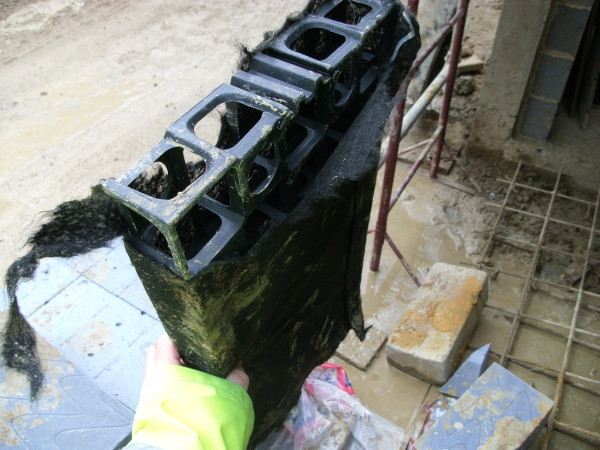CSSW Waterproofing Specialist
For a good while now the British Standard when it comes to waterproofing a structure below ground recognises the need for a Waterproofing Specialist (typically stating this person should be CSSW qualified).
This still doesn’t seem to have caught on in practice – just yesterday I was on a site with a whole bunch of waterproofing in place which was not designed by appropriately qualified persons.
The following is some very brief footage of the site:
On this site the architect/structural engineer came up with some structural waterproofing designed (strongly influenced by a structural waterproofing manufacturer).
This led to use of ALL THREE structural waterproofing systems:
- Type A – (barrier protection; in this case a sodium bentonite sheet to the exterior of earth retaining walls)
- Type B – Reinforced Concrete designed to be completely waterproof (I’m yet to confirm compliance with BS EN 1992)
- Type C – A cavity drain membrane system
In addition to all three of the above there is a land drain installed just below the foot of the earth retaining walls.
A combination of two of the above systems is right (even necessary given the context); but issues are created in using all three. Firstly, this construction is FAR more expensive than it needs to be – I think if I’d been involved at design stage the construction cost would have been ~£100k lower! Secondly, there can be a tendency to assume that because there are so many ‘lines of defense’ that they don’t necessarily have to be done perfectly.
This brings me on the main issue I noted:
The Land Drain
It is absolutely necessary that a land drain is maintainable. This one is designed with two geofabric liners to keep silt out, but that’s not enough! A land drain must have roding points and it must be possible to jet wash the land drain in order to clear out debris which will inevitably collect over decades. Here’s a photo of one module of the land drain:
There is no way this system can be flushed or maintained (and there are no access points over a 60m run).
This means that in considering this structure’s structural waterproofing design I should completely disregard the land drain. What a waste, this land drain could have been so useful if it had just been designed correctly 🙁
The knock on effect of disregarding the land drain means that upward pressure on the underside of the floor slab (heave) must be given serious consideration. Unfortunately I don’t have time to go into that right now – I’ll save it for another post.
Conclusion
Getting an appropriately qualified structural waterproofing specialist in at design stage is a must.
Using a CSSW qualified structural waterproofing specialist is a requirement in order to be compliant (for NHBC, LABC and the relevant British Standards) and you will be caught out x months down the road when you try and get a warrantee on the structure.
Not only that, but using an independent specialist is likely to SAVE YOU A LOT OF MONEY rather than having manufacturers scare you into using all of their products at the same time!
Property Care Consultants provides structural waterproofing consultancy through CSSW.LONDON

